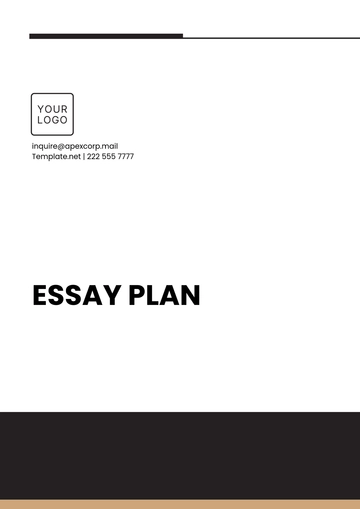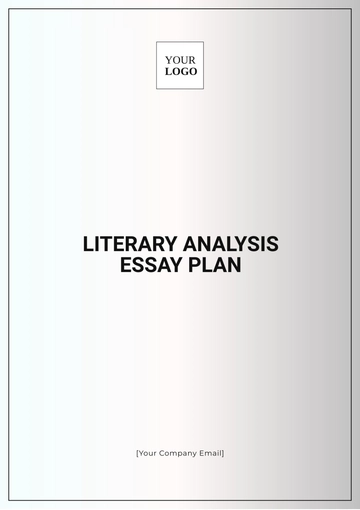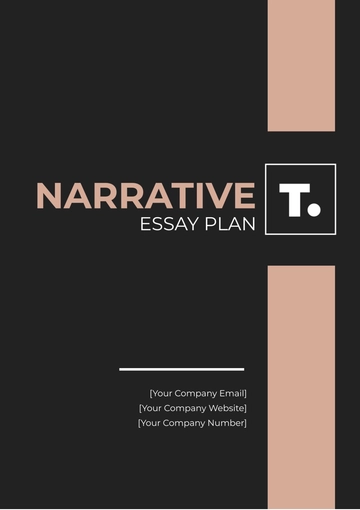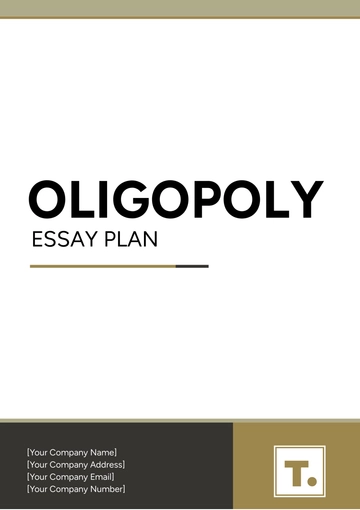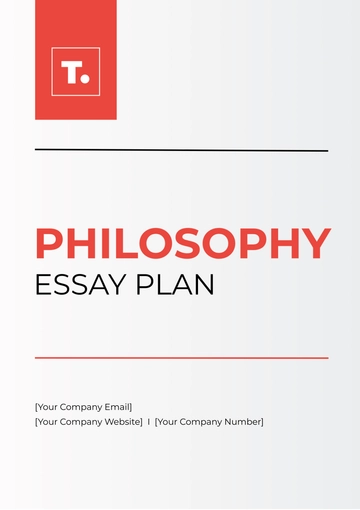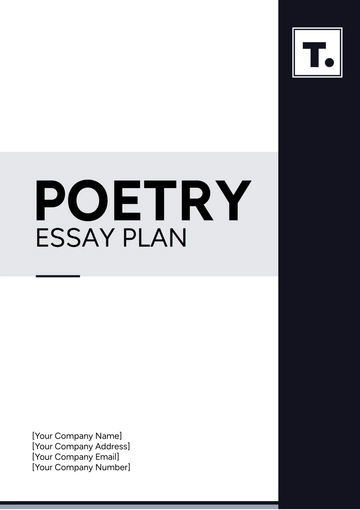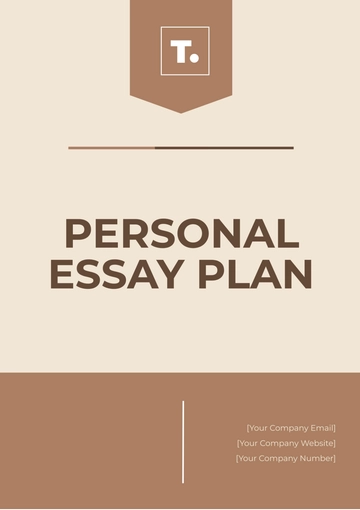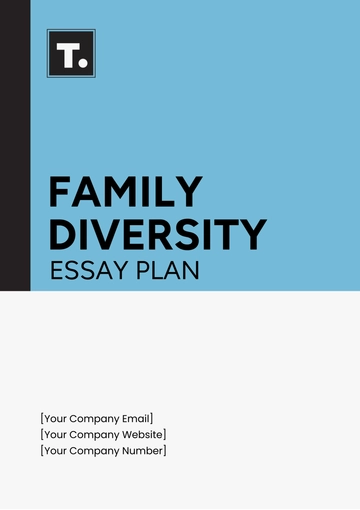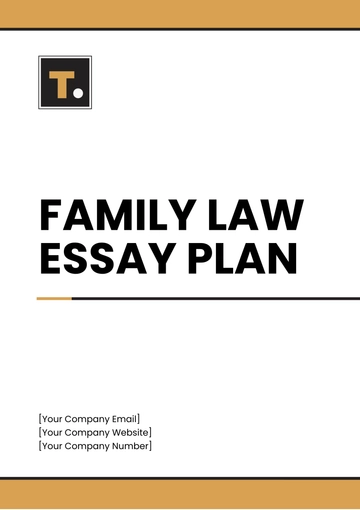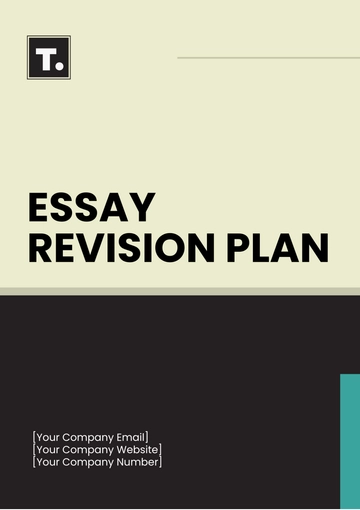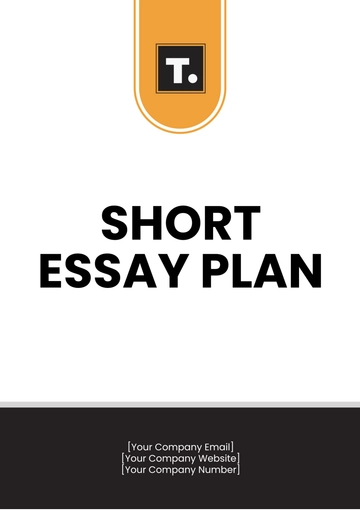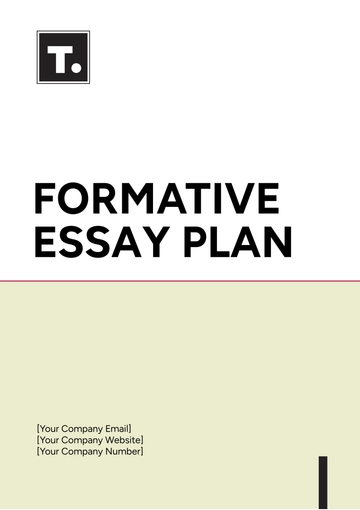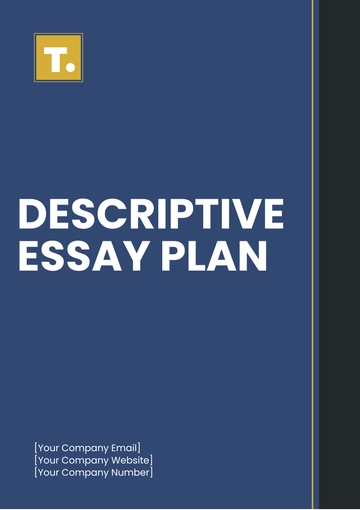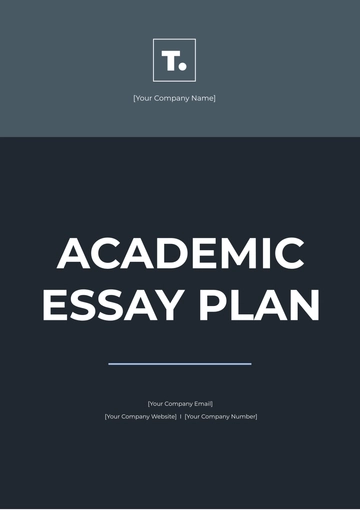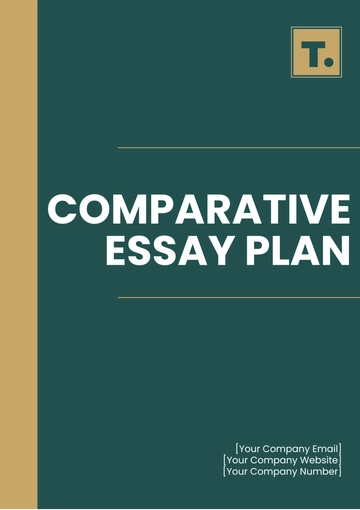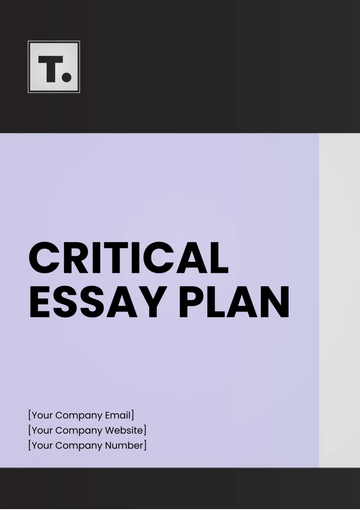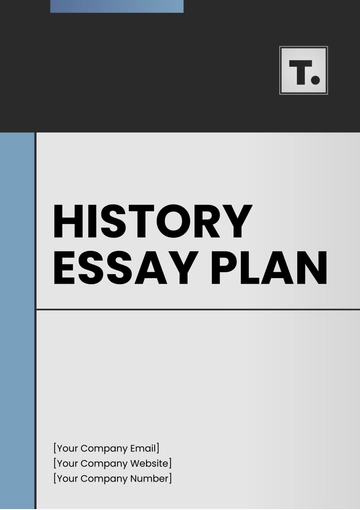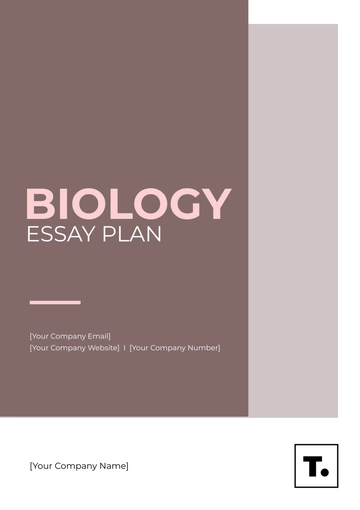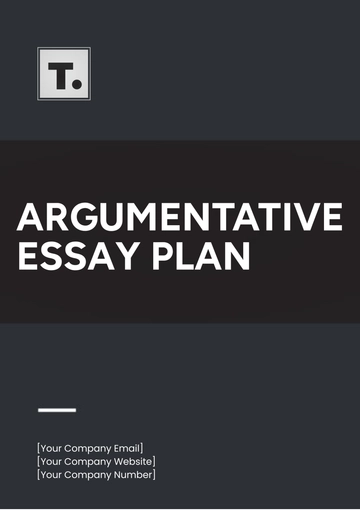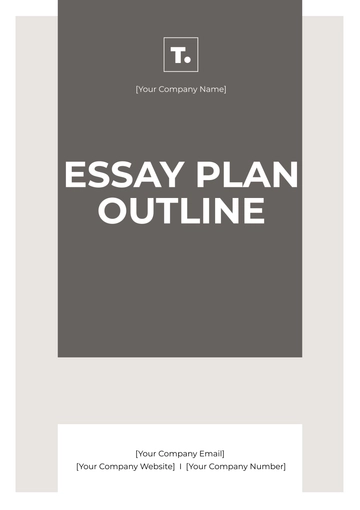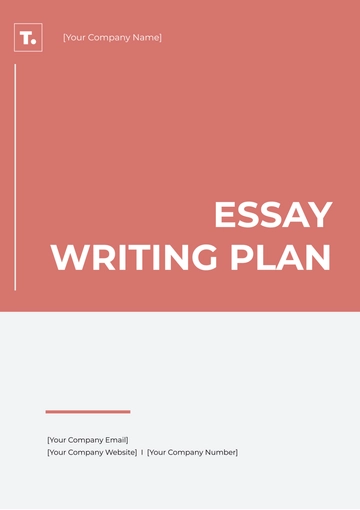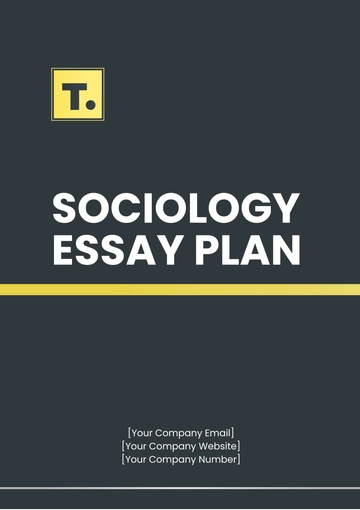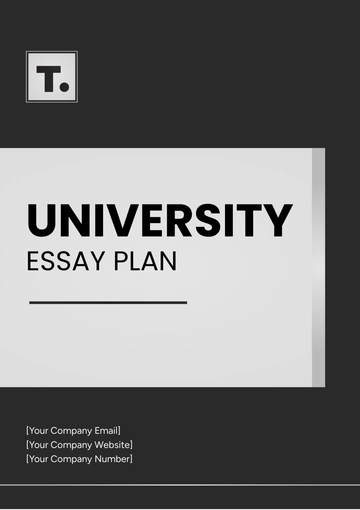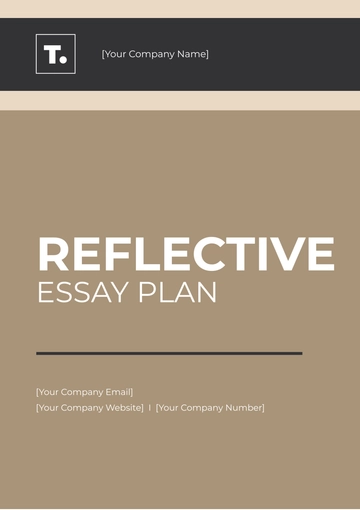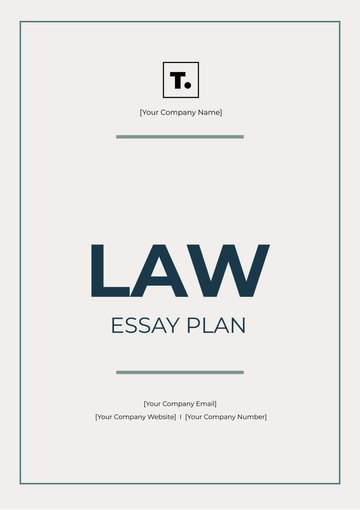Free Formative Essay Plan
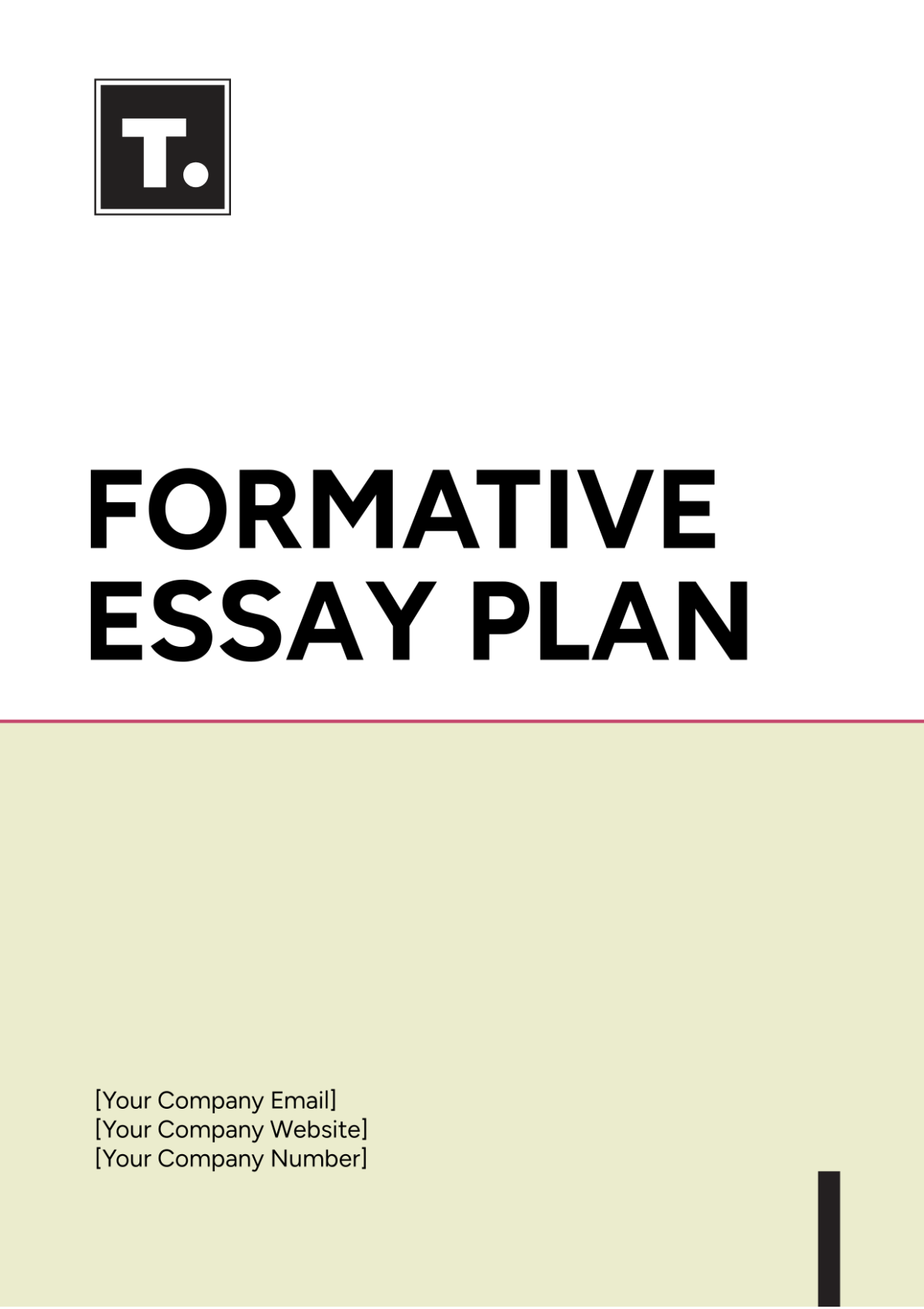
I. Introduction
Purpose:
This essay plan serves as a roadmap for structuring and organizing a formative essay, facilitating a coherent and insightful exploration of the topic.
STUDENT'S NAME: [YOUR NAME]
INSTRUCTOR'S NAME: [INSTRUCTOR'S NAME]
COURSE TITLE: [COURSE TITLE]
DUE DATE: June 7, 2050
ESSAY TOPIC: [ESSAY TOPIC]
WORD COUNT GOAL: [WORD COUNT GOAL]
II. Background Information
Aspect | Description |
|---|---|
CONTEXT | Provide background information on the topic to establish a foundation for the essay's analysis. |
SIGNIFICANCE | Explain the relevance and importance of the topic within its broader context or field of study. |
KEY CONCEPTS | Define any key terms or concepts central to understanding the essay's arguments. |
III. Literature Review
Aspect | Description |
|---|---|
OVERVIEW | Review relevant literature or scholarly sources related to the essay topic, summarizing key findings and insights. |
RESEARCH GAP | Identify gaps or limitations in existing research that the essay aims to address or contribute to. |
THEORETICAL FRAMEWORK | Discuss theoretical frameworks or perspectives that inform the essay's approach to the topic. |
IV. Thesis Statement
Main Argument: "[YOUR THESIS STATEMENT]" succinctly states the central argument of the essay, providing clarity and direction for the analysis to follow.
V. Main Arguments
A. First Argument
Description: Present the first key argument that supports the thesis statement.
Objectives: Outline the goals and objectives of this argument, providing a roadmap for its development.
B. Second Argument
Description: Introduce the second significant argument that contributes to the overall thesis.
Objectives: Define the objectives of this argument, detailing its relevance and implications for the essay's argumentation.
C. Third Argument
Description: Articulate the third main argument, elucidating its importance in supporting the overarching thesis.
Objectives: Specify the objectives of this argument, highlighting its unique contributions to the essay's analysis.
VI. Supporting Evidence
Aspect | Description |
|---|---|
SUPPORTING EVIDENCE FOR THE FIRST ARGUMENT | Provide specific examples, data, or quotations that substantiate the first argument. |
SUPPORTING EVIDENCE FOR THE SECOND ARGUMENT | Offer additional evidence or examples to bolster the second argument. |
SUPPORTING EVIDENCE FOR THIRD ARGUMENT | Present compelling evidence or examples that reinforce the third argument. |
VII. Counterarguments
Counterargument 1: Address potential counterarguments or opposing viewpoints to anticipate objections to the main thesis.
Rebuttal: Provide a rebuttal or refutation of the counterargument, defending the validity of the main thesis.
VIII. Conclusion
Summary of Arguments: Summarize the main arguments presented in the essay, emphasizing their significance and relevance to the thesis.
Implications: Discuss the broader implications of the essay's findings, exploring their relevance to the field of study or real-world applications.
Future Directions: Propose potential areas for further research or inquiry, suggesting avenues for future exploration of the topic.
Final Thoughts: Offer concluding remarks or reflections on the essay's analysis, leaving the reader with a lasting impression of the essay's significance.
- 100% Customizable, free editor
- Access 1 Million+ Templates, photo’s & graphics
- Download or share as a template
- Click and replace photos, graphics, text, backgrounds
- Resize, crop, AI write & more
- Access advanced editor
Crafted by Template.net, our Formative Essay Plan Template streamlines your academic journey. Tailor-made and fully editable, it empowers you to shape your thoughts effortlessly. Customizable within our intuitive Ai Editor Tool, it ensures precision and ease in organizing your ideas. Elevate your essay-writing experience with this versatile tool.
You may also like
- Finance Plan
- Construction Plan
- Sales Plan
- Development Plan
- Career Plan
- Budget Plan
- HR Plan
- Education Plan
- Transition Plan
- Work Plan
- Training Plan
- Communication Plan
- Operation Plan
- Health And Safety Plan
- Strategy Plan
- Professional Development Plan
- Advertising Plan
- Risk Management Plan
- Restaurant Plan
- School Plan
- Nursing Home Patient Care Plan
- Nursing Care Plan
- Plan Event
- Startup Plan
- Social Media Plan
- Staffing Plan
- Annual Plan
- Content Plan
- Payment Plan
- Implementation Plan
- Hotel Plan
- Workout Plan
- Accounting Plan
- Campaign Plan
- Essay Plan
- 30 60 90 Day Plan
- Research Plan
- Recruitment Plan
- 90 Day Plan
- Quarterly Plan
- Emergency Plan
- 5 Year Plan
- Gym Plan
- Personal Plan
- IT and Software Plan
- Treatment Plan
- Real Estate Plan
- Law Firm Plan
- Healthcare Plan
- Improvement Plan
- Media Plan
- 5 Year Business Plan
- Learning Plan
- Marketing Campaign Plan
- Travel Agency Plan
- Cleaning Services Plan
- Interior Design Plan
- Performance Plan
- PR Plan
- Birth Plan
- Life Plan
- SEO Plan
- Disaster Recovery Plan
- Continuity Plan
- Launch Plan
- Legal Plan
- Behavior Plan
- Performance Improvement Plan
- Salon Plan
- Security Plan
- Security Management Plan
- Employee Development Plan
- Quality Plan
- Service Improvement Plan
- Growth Plan
- Incident Response Plan
- Basketball Plan
- Emergency Action Plan
- Product Launch Plan
- Spa Plan
- Employee Training Plan
- Data Analysis Plan
- Employee Action Plan
- Territory Plan
- Audit Plan
- Classroom Plan
- Activity Plan
- Parenting Plan
- Care Plan
- Project Execution Plan
- Exercise Plan
- Internship Plan
- Software Development Plan
- Continuous Improvement Plan
- Leave Plan
- 90 Day Sales Plan
- Advertising Agency Plan
- Employee Transition Plan
- Smart Action Plan
- Workplace Safety Plan
- Behavior Change Plan
- Contingency Plan
- Continuity of Operations Plan
- Health Plan
- Quality Control Plan
- Self Plan
- Sports Development Plan
- Change Management Plan
- Ecommerce Plan
- Personal Financial Plan
- Process Improvement Plan
- 30-60-90 Day Sales Plan
- Crisis Management Plan
- Engagement Plan
- Execution Plan
- Pandemic Plan
- Quality Assurance Plan
- Service Continuity Plan
- Agile Project Plan
- Fundraising Plan
- Job Transition Plan
- Asset Maintenance Plan
- Maintenance Plan
- Software Test Plan
- Staff Training and Development Plan
- 3 Year Plan
- Brand Activation Plan
- Release Plan
- Resource Plan
- Risk Mitigation Plan
- Teacher Plan
- 30 60 90 Day Plan for New Manager
- Food Safety Plan
- Food Truck Plan
- Hiring Plan
- Quality Management Plan
- Wellness Plan
- Behavior Intervention Plan
- Bonus Plan
- Investment Plan
- Maternity Leave Plan
- Pandemic Response Plan
- Succession Planning
- Coaching Plan
- Configuration Management Plan
- Remote Work Plan
- Self Care Plan
- Teaching Plan
- 100-Day Plan
- HACCP Plan
- Student Plan
- Sustainability Plan
- 30 60 90 Day Plan for Interview
- Access Plan
- Site Specific Safety Plan
